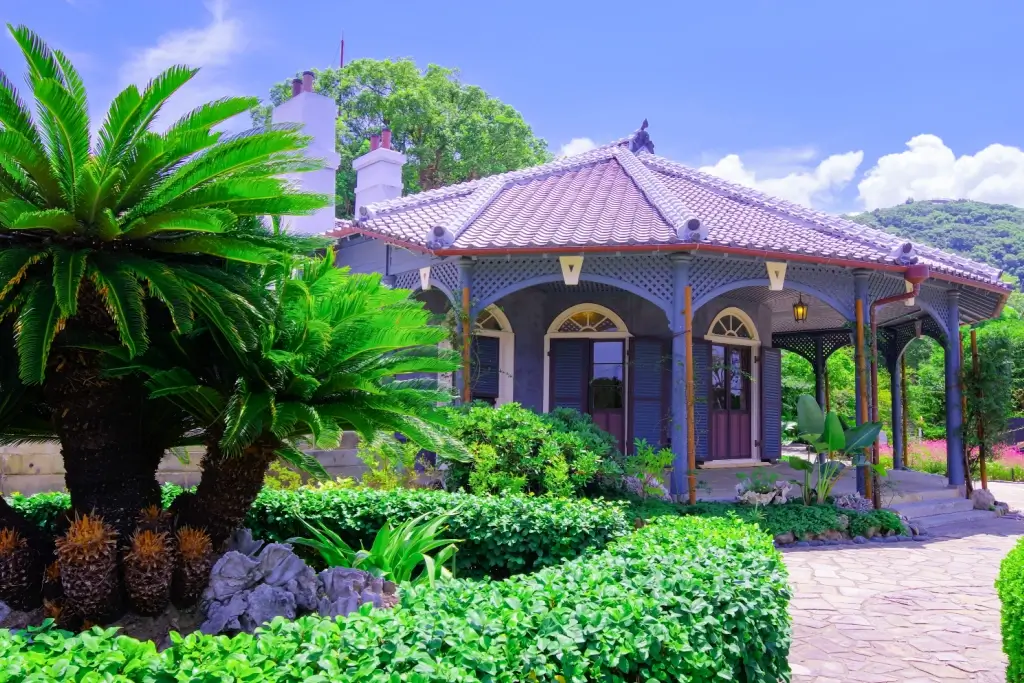Nagasaki has a remarkable mix of history, culture, and scenic spots. It has impressive landmarks, peaceful parks, and beautifully designed gardens. Travelers can explore its unique blend of Western and Japanese influences. Whether you like history or want a scenic adventure, Nagasaki’s sights promise something memorable for every visitor!
Table of Contents
ToggleWhere is Nagasaki?
Nagasaki is located on the western coast of Kyushu. This area blends Japanese and Western influences due to its role as a port during the Edo period. Its location allowed it to serve as Japan’s window to the world. Even today, Nagasaki’s landscape and architecture have a unique fusion that has captivated visitors for centuries. The city’s historical significance and seaside charm make it a great destination on Kyushu’s western shore.
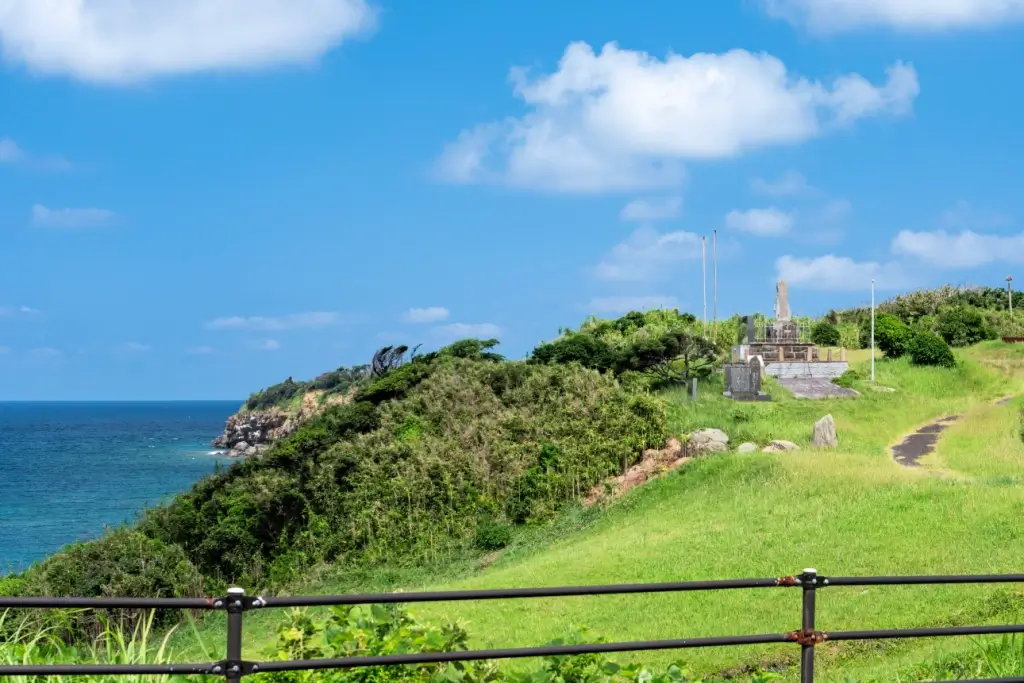
This area also has impressive natural beauty, surrounded by mountains and a pretty bay. This setting creates a refreshing atmosphere, blending urban life with scenic landscapes. Nagasaki’s coastal position provides it with mild weather, making it pleasant to explore most of the year. The city is also famous for its warm and welcoming local community, enhancing the travel experience.
Oura Cathedral
Oura Cathedral, established in 1864, is an iconic landmark of Christian history in Japan. Built by French missionaries, its purpose was to serve Nagasaki’s foreign community and is now a historical symbol of religious freedom. Known as the “Church of the 26 Martyrs,” it honors Japanese Christians who sacrificed their lives during the country’s era of isolation.
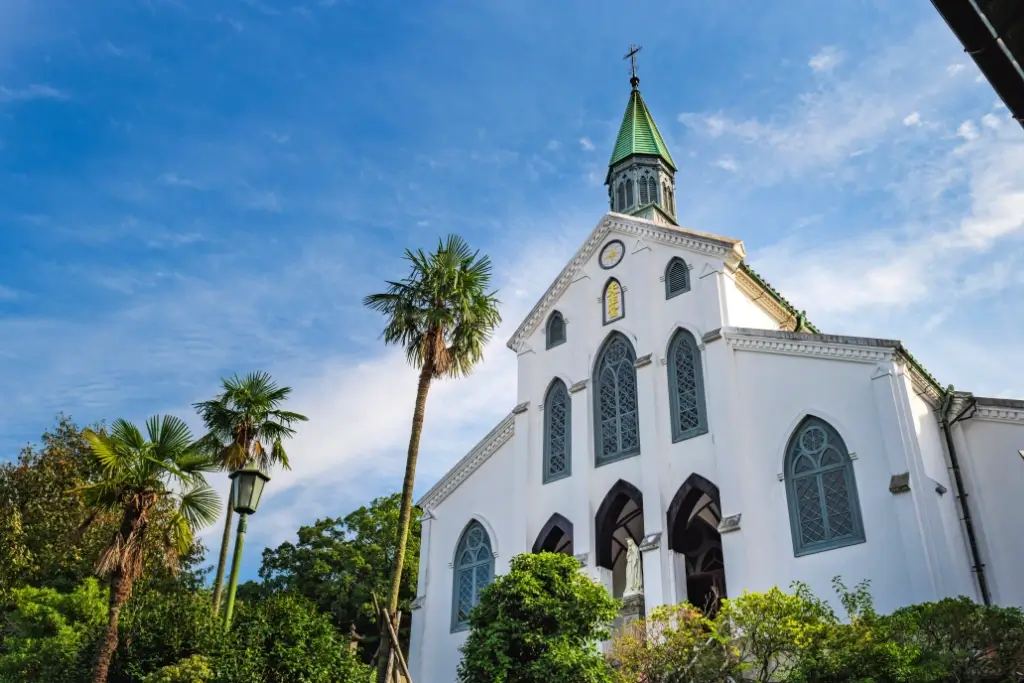
Visitors can admire the beautiful stained-glass windows and the serene atmosphere inside the cathedral, contrasting with the lively streets outside. Along with its historical importance, Oura Cathedral is a popular spot for photography, capturing the fusion of European design within a Japanese setting. Recognized as a UNESCO World Heritage site, Oura Cathedral continues to be a reminder of faith, endurance, and cultural exchange.
Shinchi Chinatown
Shinchi Chinatown is one of the oldest Chinatowns in Japan. It developed in the 17th century due to Nagasaki’s open port, which welcomed Chinese traders. Today, the streets are lined with restaurants and shops selling Chinese food, souvenirs, and unique trinkets. Visitors can enjoy Chinese cuisine, from dim sum to sweets. Shinchi Chinatown blends culinary and cultural traditions from China with Japanese elements.
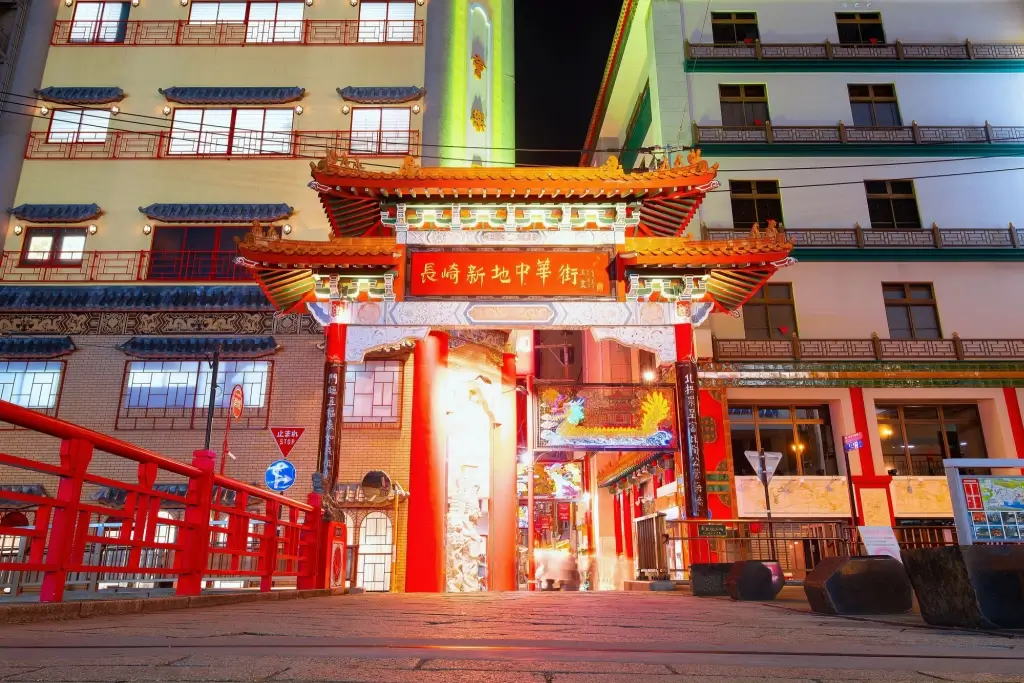
Throughout the year, Shinchi Chinatown hosts Chinese events and festivals, such as the Lunar New Year, where visitors can enjoy festive decorations and performances. Walking through the area offers a great experience, from the aroma of food to the sounds of the crowds. Colorful lanterns and traditional Chinese architecture make it an excellent location for photos and memories.
Are you looking for great snacks from places across Japan? Check out Sakuraco! Sakuraco delivers traditional Japanese snacks, teas, and sweets from local Japanese makers directly to your door so you can enjoy the latest treats directly from Japan!
Nagasaki Peace Park
Nagasaki Peace Park is a tribute to the city’s strength and dedication to promoting peace. Established in memory of the lives lost during the atomic bombing in 1945, the park holds significant historical importance. Visitors can explore the Peace Statue, a symbol of hope and reconciliation. The park features gardens and the Fountain of Peace, created as a tribute to those who sought water after the bombing.
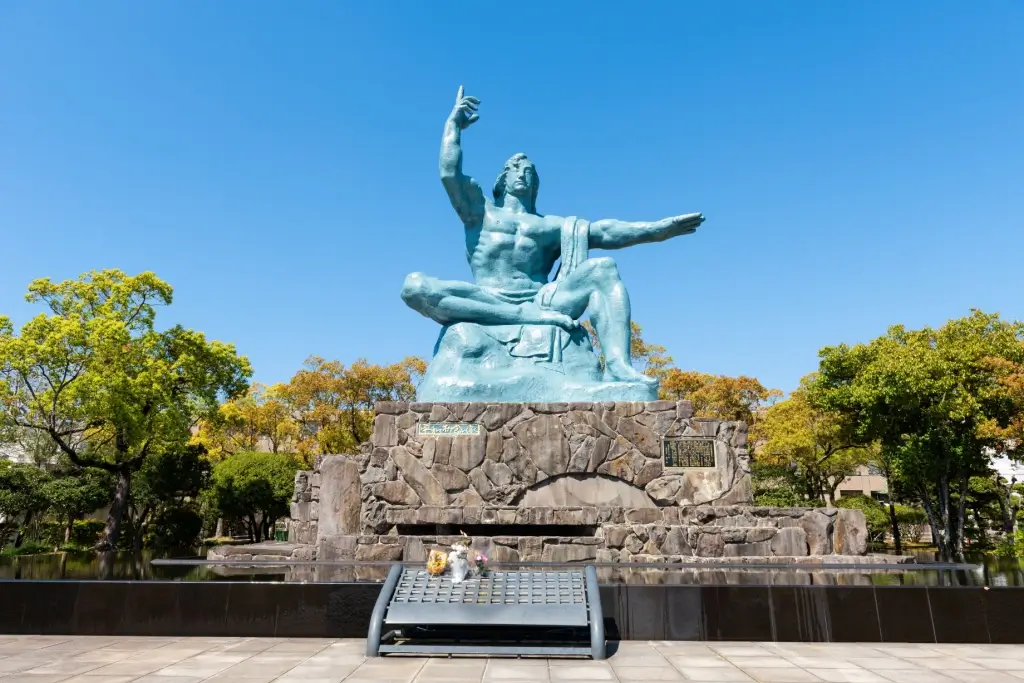
The park is also home to the Nagasaki Atomic Bomb Museum, which educates visitors on the effects of the bombing and the city’s efforts toward peace. Walking through the park encourages visitors to reflect on the importance of global peace. Messages and artworks from various countries can be found throughout the area. The Nagasaki Peace Park serves as a reminder that, while painful, history can lead to a brighter path forward.
Glover Garden
Glover Garden offers a glimpse into Nagasaki’s role as a meeting point between Japan and the West. Located on a hillside, the garden was once the residence of Thomas Blake Glover, a Scottish merchant influential in Japan’s modernization. The garden has preserved Western-style houses, showcasing 19th-century architecture with sweeping views of the city and sea. Visitors can stroll through pathways lined with seasonal flowers.
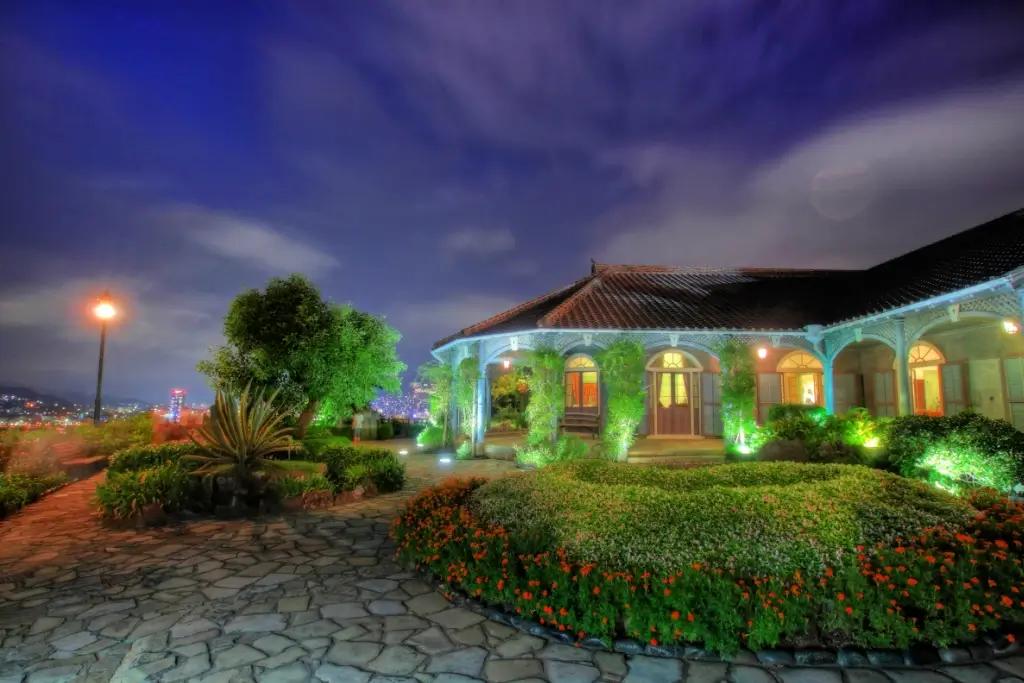
Each house in Glover Garden has distinct architectural details, from wooden verandas to vintage furnishings. The garden is beautifully landscaped, with plants that change with the seasons, offering visitors a year-round vibrant and picturesque setting. Glover Garden also features statues and plaques detailing the historical significance of each building, embodying the spirit of cultural exchange that has defined Nagasaki for centuries.
Meganebashi Bridge
Meganebashi, known as Spectacles Bridge, is one of Nagasaki’s most famous landmarks. Built in 1634, this stone bridge spans the Nakashima River and gets its name from the “spectacle” effect created by its reflection in the water. It’s Japan’s oldest stone arch bridge, attracting history enthusiasts and photography lovers. The bridge’s design reflects Japanese aesthetics and has survived multiple floods.
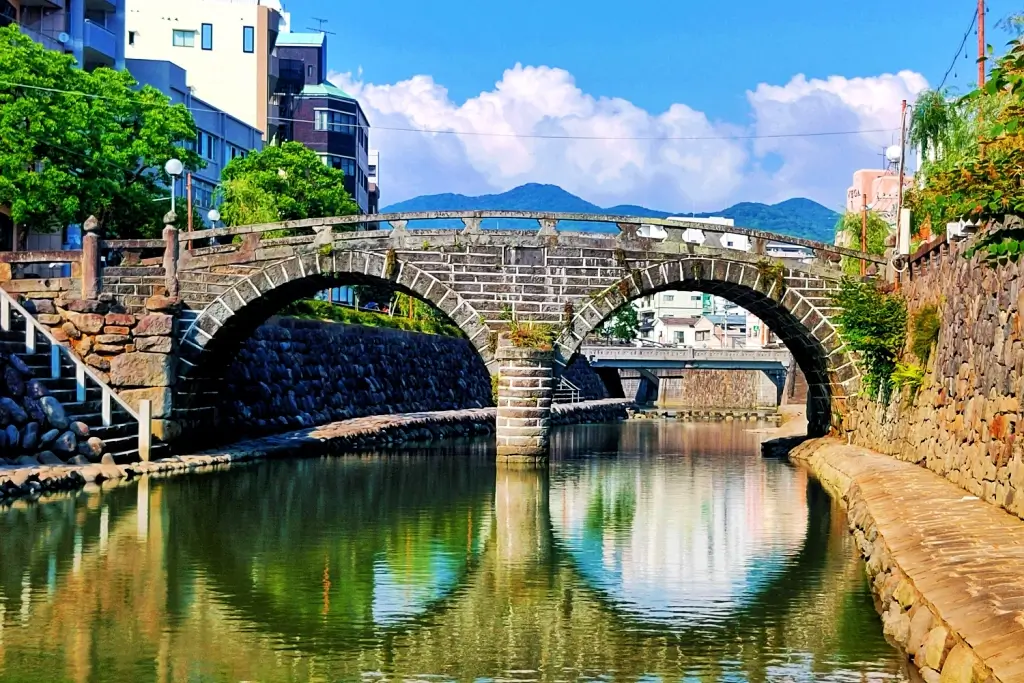
The surrounding area has stone paths and smaller bridges, perfect for leisurely walks. Visitors can enjoy the seasonal beauty along the river, especially during cherry blossom season, when the area transforms into a floral spectacle. Meganebashi has become a favorite location for photographers due to its unique symmetry and charm. In addition to being an aesthetic landmark, the bridge is proof of Japan’s skilled masonry.
Why should I check out Nagasaki?
People visit Nagasaki to experience Japanese and international history, culture, and scenic beauty. The city offers diverse attractions, from landmarks to cultural districts, that reflect its multicultural past. Places like Nagasaki Peace Park and Oura Cathedral give insight into resilience and harmony. The gardens, such as Glover Garden, and spots like Meganebashi Bridge showcase the city’s commitment to preserving its heritage and natural beauty.
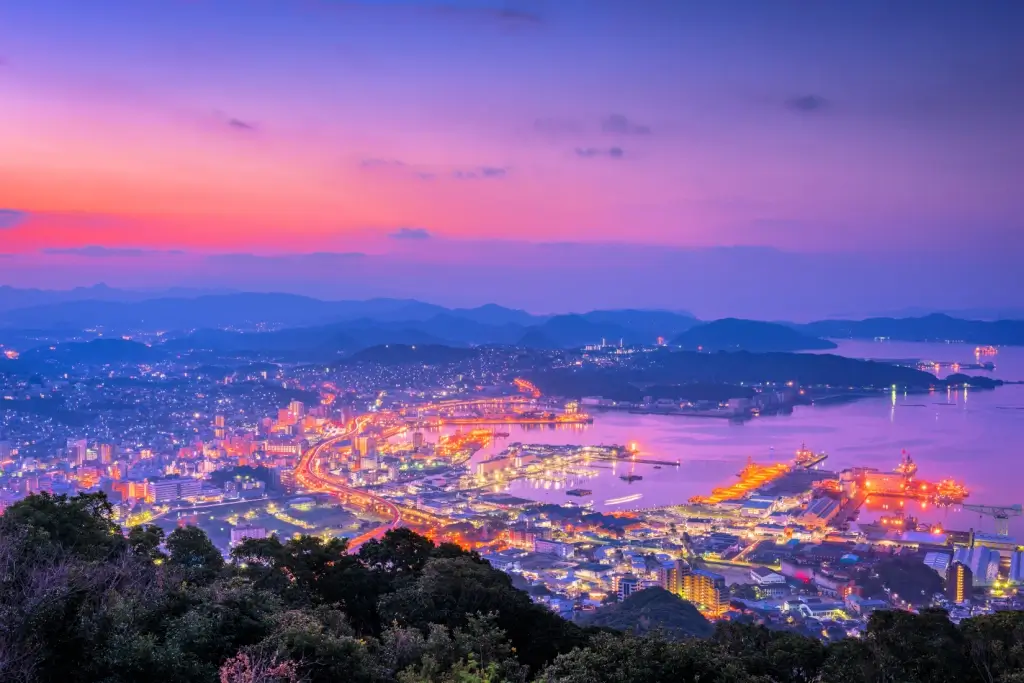
Nagasaki’s attractions highlight the city’s journey from a trading hub to a center of peace and culture. The city’s dedication to promoting global harmony is evident in places like Nagasaki Peace Park, while its rich culture is celebrated in spots like Shinchi Chinatown. From historical landmarks to vibrant cultural events, Nagasaki connects travelers meaningfully with Japan’s past. Have you ever been to Nagasaki? Where did you go? Let us know in the comments below!

